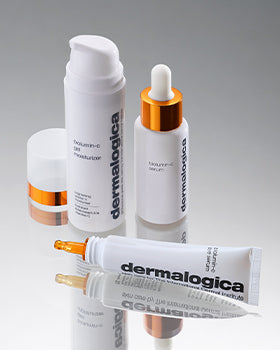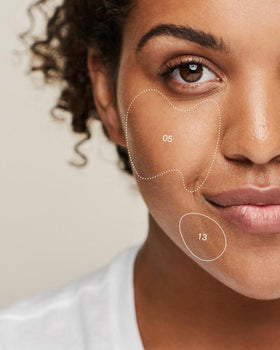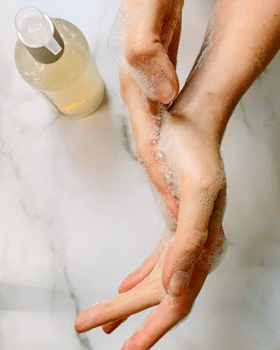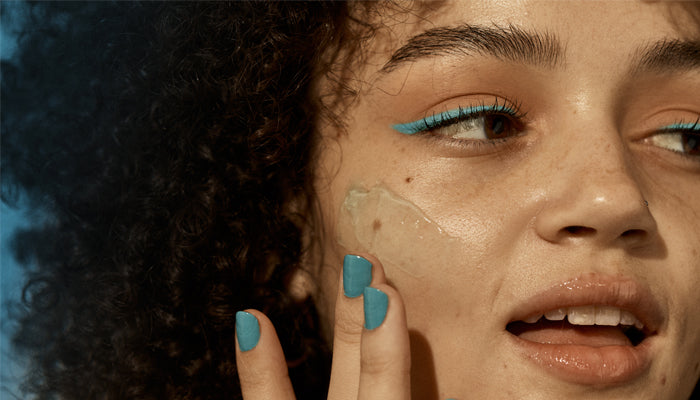Can oily skin be dehydrated?
One of our skin’s most essential functions is producing oil, and it’s a role that shouldn’t be underestimated. In fact, it’s vital for our skin to keep producing this oil, or sebum, in order for it to be as healthy as possible.
When it comes to oily skin, we immediately think about skin that's shiny and prone to breakouts. While it's true that this skin type is centred around excessive oil production, it can actually be dehydrated too. Confusing, right?!
So, how do you know if your oily skin is desperate for hydration? And how can you quench that thirst without adding oil to your skin? We’ll answer all these questions (and more) but first, let’s start with a few basics.
What causes oily skin?
The amount of oil your skin produces usually comes down to a combination of genetics and hormones. While you certainly can’t change your genetics, there are some hormones you can control by living a happy, healthy lifestyle.
What hormone causes oily skin?
One of the hormones that have a strong link to oil production is cortisol, the stress hormone. When you’re under stress, your adrenal glands release cortisol into your system. Cortisol not only encourages your body to produce more sebum but also reduces your production of hyaluronic acid, a crucial building block for skin hydration.
Whilst hormones aren’t the *only* way your skin becomes oily, they are one of the more common and something we have an element of control over.
What’s the difference between hydration and oil?
Whether we like it or not, our skin produces sebum via sebaceous glands all over our skin; it’s an essential function that keeps our skin healthy and protects it from environmental aggressors. Specifically, oils play an important role in lubricating our skin and preventing it from cracking. This goes for all skin types, whether sensitive, dry, normal, combination or oily.
When your skin is dehydrated, it’s lacking in water, which is totally different to oil or sebum. Oil may hide some of the signs of dryness, but it simply can’t replenish dehydrated skin.
How does oily skin become dehydrated?
There are many reasons that oily skin can become dehydrated, but three, in particular, are leading perpetrators;
- Exposure to the sun
Extended sun exposure can dry out skin, leading your sebaceous glands to produce even more oil to compensate for the lost moisture. Make sure to give your skin a good dose of hydration during hot summer days.
- Air-conditioning
If you work in an office that circulates conditioned air, you’ll know how drying it can be. Air conditioning systems circulate clean, dry air to keep us cool but can also strip skin of its natural moisture.
- Internal dehydration
Yes, one of the most common reasons for oily skin that’s dehydrated is that you’re simply not drinking enough water. Your skin is the first place to show signs of being thirsty, so remember to keep a water bottle by your side whenever you’re on the go.
Could my skincare be drying out my skin?
If you have oily *and* acne-prone skin, we have some bad news for you: the products that you’re using to stop blemishes may actually be stripping your skin of moisture in the long run. For example, the function of topical retinoids increases your skin’s rate of cell turnover, which can leave your skin dry and flaky as a side effect.
Another ingredient commonly found in anti-acne treatments is benzoyl peroxide. This ingredient slows down the rate at which your skin produces sebum and can lightly exfoliate it, also leaving your skin dry.
The crux of the matter is that oily skin needs balance in order to keep its oil production in check. When you use products that are too drying, it triggers a cycle of dehydration that can irritate skin and worsen chronic oiliness. So, create an oily dehydrated routine that removes excess oil without stripping skin of essential hydration.
What does oily dehydrated skin look and feel like?
For those with oily skin, the signs of dehydration can often slip under the radar. For some people, oily dehydrated skin can feel tight and look dull. You might notice dry patches around your nose or experience irritation and redness, but this isn’t always the case.
Due to the inconsistency of what dehydrated oily skin can look and feel like, it often goes undiagnosed, and most people don’t even know that they have it! If you suspect your skin might be dehydrated, the easiest way to find out is via a complimentary Face Mapping appointment at a Dermalogica Skin Centre.
How do you treat oily dehydrated skin with skincare?
Using the right products and following an oily dehydrated routine can help restore hydration and balance in your skin. While our virtual skin consultations can help you tailor a regime to your skin, here is a guideline of what to look for:
- Soap-free cleanser
A soap-free cleanser, like our clear start breakout clearing foaming wash, is a must for anyone with oily skin as it can remove grime and makeup without disturbing the pH balance of your skin. Cleanse twice a day - when you wake up and before you go to bed; any more, and you could be stripping your skin of essential oils.
- Toner
An easy way to top up hydration levels through the day is with a toner, such as our clear start micro-pore mist. The silky liquid contains cucumber extract that can quickly refresh your skin, niacinamide to address the appearance of oversized pores and brighten your complexion, and most importantly, wild rosehip flavonoid complex to reduce shine.
- Serum
Another way to supercharge your skincare regimen with extra hydration is with a serum. Go with something that’s water-based and contains hyaluronic acid or vitamin E; these two ingredients are known to be super nourishing without disturbing your skin’s oil production levels. Designed for both mature and oily dehydrated skin, our age bright clearing serum is a great option that you can use morning and night.
- Moisturiser
The right moisturiser plays a crucial role in rehydrating parched oily skin. Look for gel-based moisturisers rich in hyaluronic acid, a compound that can hold up to 1000 times its weight in water. Our clear start cooling aqua jelly is ideal for oily dehydrated skin. Packed with moisturising hyaluronic acid, blue algae extract to nourish, blueberry extract and blue tansy flower oil to soothe and protect, and bioflavonoid complex to reduce your skin’s production of oil.
If it’s all feeling a bit overwhelming and you’d like help creating a personalised plan for your oily dehydrated skin, chat with one of our skin therapists today.



